
A cellphone snapshot from shore.
I combed the beach for over an hour before sitting to rest in the hook of the arroyo mouth.
The narrow, deep drainage chute cuts the shalestone sheets underlying the grassy plain of the coastal terrace and emerges onto the beach in the lee of a big point. Here surfer’s sit.
Some thirty years ago I kindled a fire here at this spot from salted driftwood, always burning with an inordinate reek, and dried my girlfriend’s shoe. She had slipped a foot into the water on accident during our beach walk.
Decades later she mentioned it in conversation as an early measure of a person she was still at that time getting to know. We were teenagers.
At that time no otters could possibly have been seen at this beach; they weren’t legally allowed to exist here, in their historic native range.
On a recent afternoon I sat here on a sunbleached log for a rest. I looked up to the scene before me for the first time, having been consumed with beachcombing all moments prior, chin to chest, eyes hard on the positive rake.
And there floated the sea otter before me. To see an otter in Gaviota waters today is to witness positive change in one’s lifetime.
By the 1930s, it’s said that fewer than 50 otters remained in existence in California waters, only around Big Sur, a remnant population that had survived over 100 years of hard pursuit by fur trappers.
From this small band the otters rebounded to their present population of about 3,000, having been listed under the Endangered Species Act in 1977.
But then from 1987, until the moratorium on removal was granted in 1993, under the No Otter Zone law, otters found in south county waters in Santa Barbara were forcibly relocated north of Point Conception. The anti-otter policy was not officially terminated until 2013.
Return of the otters to the Gaviota Coast has been a long time coming.
I sat watching the otter dive and eat whatever it was collecting from the seafloor.
Sometimes the otter would remain underwater for longer than usual, as if troubled by something particularly hard to get a hold of.
Then finally it’d rocket through the surface of the water with buoyant force enough to lift half its body into the air.
I thought of one of those lobsters you get a hand on once in awhile when freediving coastal shallows, but the bug is wedged deep in a cavity in the reefstone. You hold out as long as possible, trying with gentle force to pull the lobster out of its hole, until, desperate for air, you plunge upward breaking through the surface water in a violent, gasping rush.
Whenever the otter surfaced with its quarry the seagull would swim in close hoping to score some of the pickings.
On and on the game went, the otter and the gull, at otter’s point, along the Gaviota Coast.

Related Posts:
Gaviota Coast Gallivants: The Wildest Wilderness
Gaviota Coast Gallivants: Chumash Arrowhead









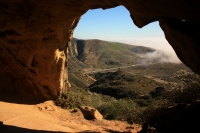
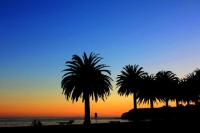

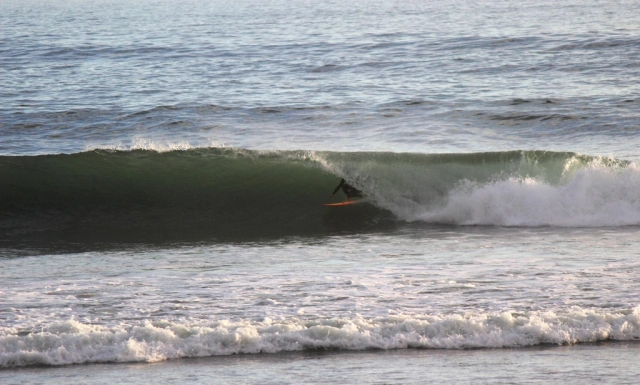
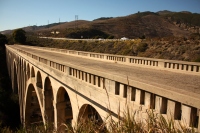
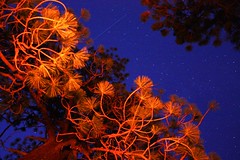








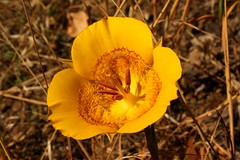









Unforuantly group of 12 otters have been active along the coast this year, staying longer than normal. One gave birth to a pup which is very rare here! Sadly, it did not survive
Thank you for the great story. It was very enjoyable to read! You often hear people say that there are no abalones where sea otters live. The opposite is true. Without otters, nothing keeps sea urchins in check, which then decimate the kelp forests, which otters need to live. With otters, kelp and abalone thrive! But unfortunately, many ill-informed divers will tell you just the opposite. Thanks again, I really enjoy your articles, I’m a life-long local from San Luis, so I can really relate!
I was a student at UCSB from 05-09. I’ve seen otters twice off IV probably about 08. The first time I couldn’t believe my eyes. The second time I was in my kayak and filmed it on my digital camera. iPhones weren’t really a thing yet. It was rather playful and dove under my kayak, thumping it, before surfacing 10 or so yards away. I hope they become more frequent.